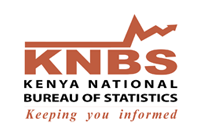
The economy is estimated to have expanded by 5.7 per cent in the third quarter of 2016 compared to a growth of 6.0 per cent in the same quarter of 2015. The key macroeconomic indicators remained largely stable during the third quarter of 2016. Inflation was contained within the Central Bank’s target to average at 6.3 per cent compared to an average of 6.1 per cent during the same quarter in 2015. The slight increase in inflation was primarily due to increases in prices of food and beverages during the period under review. This rise was however countered by significant decreases in prices of utilities and transport.
Internationally, Murban ADNOC prices (US$/barrel) declined by 9.3 per cent during the quarter compared to the same quarter of 2015. In the money market, the Kenyan Shilling strengthened
against the US dollar, Euro, Sterling pound, South African Rand and the Tanzanian Shilling but weakened against the Yen and the Ugandan Shilling during the quarter compared to a similar period in 2015.
The amendment of the Banking Act in August 2016 to cap the lending rates to a maximum of 4.0 per cent above the Central Bank Rate (CBR) resulted to a substantial decline in the interest rates during the month of September to 13.84 percent from 16.75 per cent in the same month of 2015. The current account deficit
narrowed by 10.4 per cent to a deficit KSh 100,687 million in the third quarter of 2016 from a deficit of KSh 112,377 million during the same quarter of 2015. The overall balance of payments also improved from a deficit of KSh 51,356 million in the third quarter of 2015 to KSh 5,710 million during the quarter under review.
Generally, the economic growth was well spread although most of the sectors of the economy recorded slowed growths. Accommodation and restaurants; transport and storage; wholesale and retail trade; information and communication; health; professional, administrative and support; and public administration registered improved growths during the review quarter (see table
Performance of the various agricultural crops varied widely with production of vegetables, cut flowers and milk estimated to have improved significantly while that of maize, tea, coffee and fruits recorded declines. Consequently, the growth of the agriculture, forestry and fishing sector is estimated to have slowed to 3.9 percent during the quarter under review compared to a growth of 5.5 during the same quarter in 2015. Activities of the manufacturing and the construction industries recorded notable slowdown in growths. Figure 1 depicts the performance of the Kenyan economy during the third quarters since 2012. Download Third Quarter 2016 GDP Release



 The Leading Economic Indicators highlights trends in Consumer Price Indices (CPI) and inflation, interest rates, exchange rates, international trade, agriculture, energy, manufacturing, building and construction, tourism and transport.
The Leading Economic Indicators highlights trends in Consumer Price Indices (CPI) and inflation, interest rates, exchange rates, international trade, agriculture, energy, manufacturing, building and construction, tourism and transport. 




 Kenya National Bureau of Statistics hereby releases the Producer Price Index (PPI) for the third quarter of 2016. Producer Price Index measures the gross changes in the trading price of products on the domestic and non-domestic markets, at all stages of processing.
Kenya National Bureau of Statistics hereby releases the Producer Price Index (PPI) for the third quarter of 2016. Producer Price Index measures the gross changes in the trading price of products on the domestic and non-domestic markets, at all stages of processing.